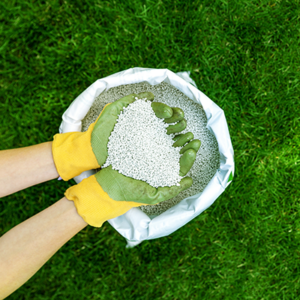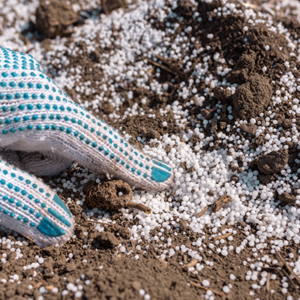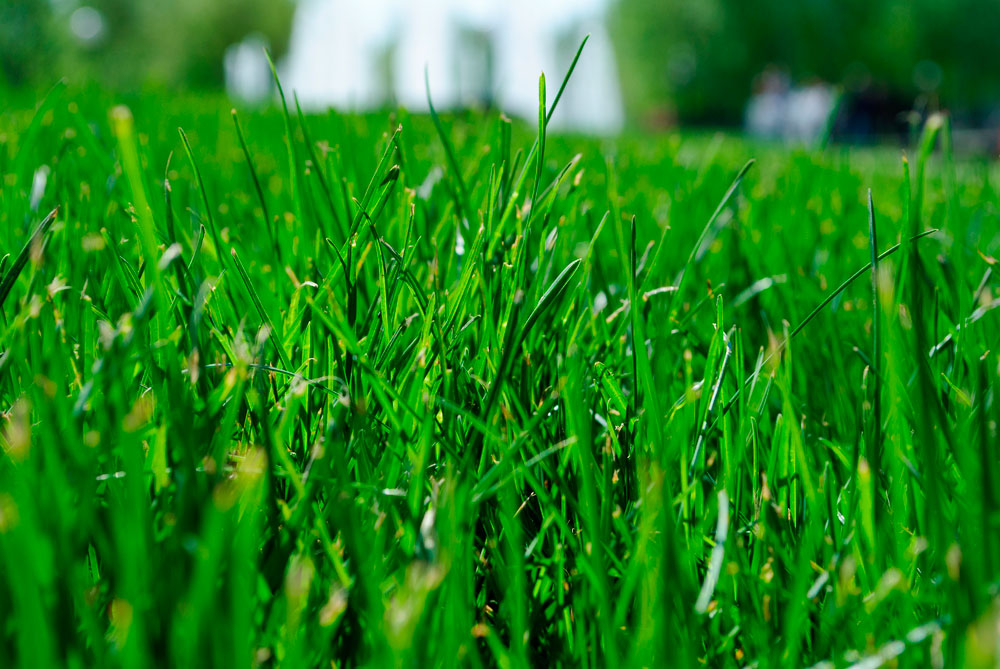Everyone knows that to grow strong, fend off pests and diseases, and keep that rich green color, grass must be fertilized every so often. But have you ever wondered what fertilizer is? What makes it so beneficial for your lawn and garden? Today, we’ll teach you what goes into your fertilizer and why treating your turfgrass with it should be an essential part of your lawn care routine.
What Makes Fertilizer So Appealing To Turfgrass
Many of us take multivitamins daily to help our bodies get all the minerals it needs to stay fit and healthy. In a nutshell, this is what fertilizer does for your lawn. Using a combination of macronutrients and micronutrients, these beneficial substances replenish nutrients that might be lacking in the soil.

Fertilizer Mineral Breakdown
If you’ve purchased fertilizer from the hardware store, you’ve probably noticed a series of three numbers on the container. 16-12-12 or 4-4-4 are two examples. These numbers tell you the ratio of the three essential macronutrients: nitrogen, phosphorous, and potassium. Your turfgrass needs all three of these nutrients to grow properly. However, not all lawns are the same. To go back to the multivitamin comparison, think about the minerals that humans need. Everyone needs iron, but women need more iron than men. It’s the same with your lawn. Some grass might have lost their nitrogen due to overwatering. In that circumstance, the grass needs more nitrogen than other lawns. Understanding the breakdown of these three numbers will help you make the best choice for your yard. If you have any questions about the fertilizer Pine Valley Turf is using on your lawn, be sure to ask your lawn care service technician!
Macronutrients In Lawn Fertilizer
Nitrogen
Nitrogen is the powerhouse of the nutrients in the fertilizer. It’s what helps you achieve a faster green-up in spring, and applying it as a winterizer in late fall/early winter can help your grass hit the ground running next year. It helps grass retain its color, develop leaves, form chlorophyll to make food, and conduct photosynthesis. Nitrogen-heavy fertilizers come in two different forms: slow-release and quick-release.
Slow-Release Fertilizer
Slow-release fertilizer is usually sold in granular form so that it will dissolve slowly over time. This type of fertilizer is best applied in late fall to last winter when nutrients are hard for grass to come by. There is less chance of burning the grass because the concentration is diluted—more on this in a moment.
Quick-Release Fertilizer
This type of fertilizer is often sold in liquid form with a hose attachment. Take care when using this type of fertilizer because it can create a sudden flush of growth, resulting in uneven coloration of the lawn. Unfortunately, it can also have the opposite effect and burn the grass. Quick-release fertilizers are water-soluble, so they dissolve quicker than granular fertilizers. If there is excess rain right after applying it, you may need to reapply since it can get flushed out from the soil rather quickly.

Phosphorous
Phosphorous helps your grass develop roots early on so it can maintain a robust root system throughout the growing season. It also allows seedlings to reach maturity faster, so phosphorous is a must if you have a new lawn or plan to have one soon. Young fresh grass is more vulnerable to changes in temperature, weed infestations, surface insects, and disease. So the faster it reaches maturity, the less likely you’ll have problems on your hands.
Potassium
Potassium is your turfgrass’ shield against stressors like heat and drought – conditions that can make grass brittle, shock it into going dormant, or even die off. But if your grass’s potassium levels are sufficient, it can regulate its vital functions like photosynthesis and improve its tolerance to harsh conditions. And like phosphorous, potassium enhances root growth and correct stem development.
Micronutrients In Fertilizer
Micronutrients are essential to have in your soil, but they aren’t needed in as large quantities as macronutrients. Micronutrients include the following minerals:
- Boron
- Chlorine
- Copper
- Iron
- Manganese
- Nickel
- Zinc
Your turfgrass uses these nutrients for vital processes like chlorophyll production, photosynthesis, DNA synthesis, disease resistance, and other critical functions.
Find Lawn Care Services Near Charlotte
If your lawn looks a little worse for wear, let the Pine Valley Turf professionals bring it back to life. Our lawn fertilization program replenishes all the macro and micronutrients your turfgrass needs to perform vital functions, withstand stressors, and retain that lush green color. To learn more about how our program can help you or schedule a treatment, call us at (704) 831-8917, or you can reach us through our online form.
If you enjoyed this blog, you can browse our blog page for more information and helpful articles here: https://pinevalleyturf.com/blog
Like us on Facebook: https://www.facebook.com/PineValleyTurf
Follow us on Instagram: https://www.instagram.com/pinevalleyturf/

